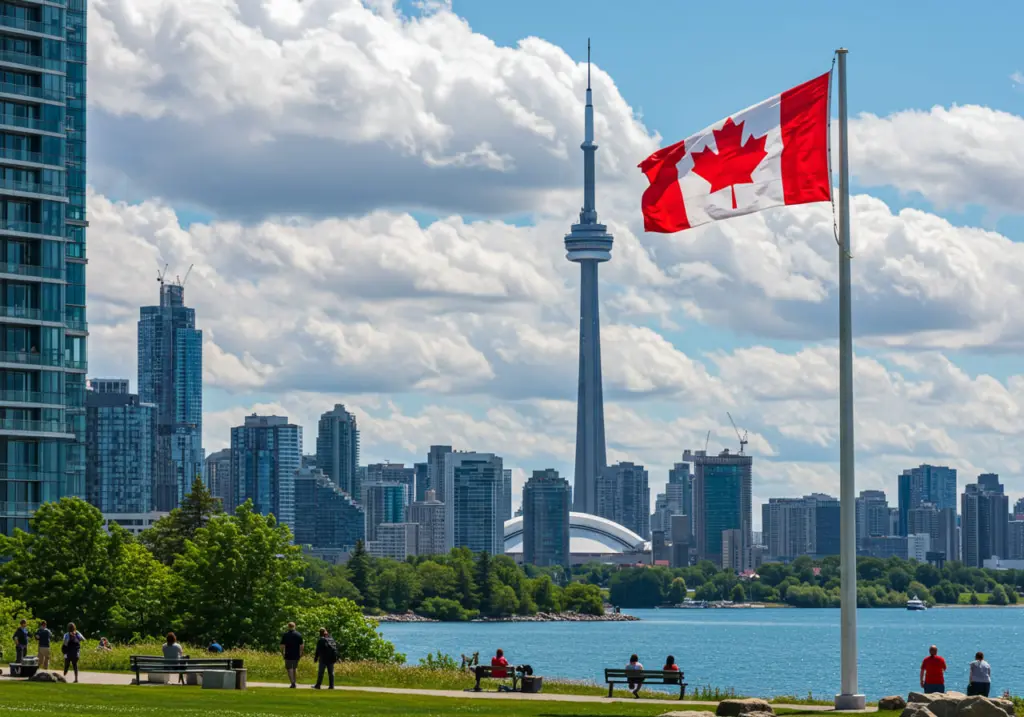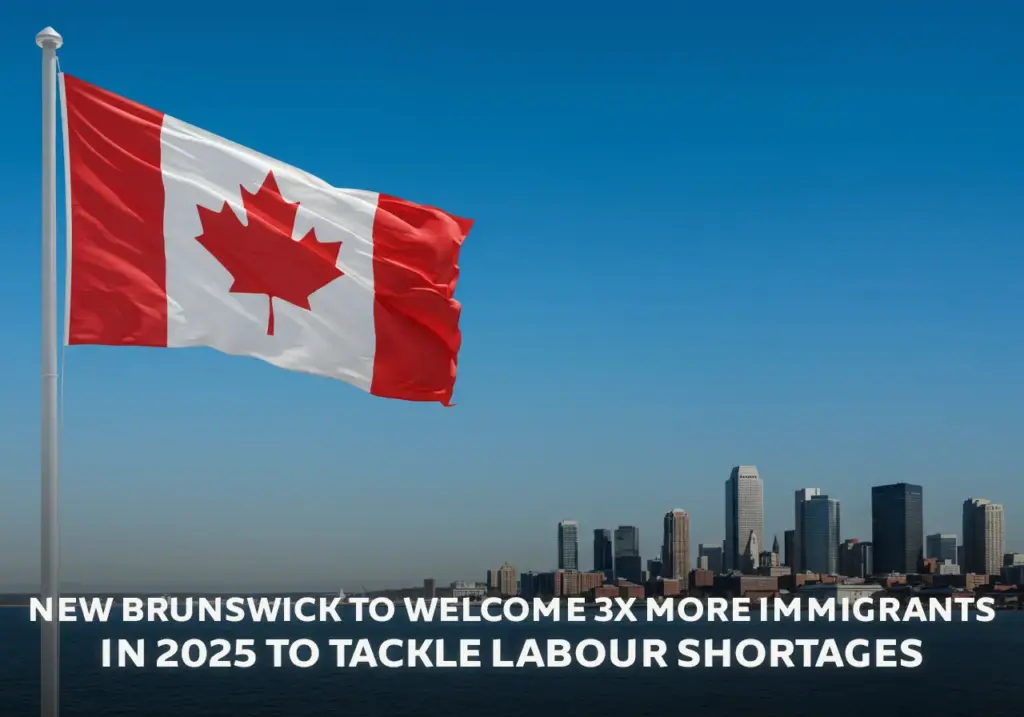What are the permanent residence options for international students in Canada?
Why has Canada become a top destination for foreign students seeking quality education and a bright future? How do study permits act as bridges in supporting students’ transit from temporary status to permanent residence?
This blog post describes the top 5 ways in which foreign students who graduate from institutions in Canada can obtain permanent resident status in Canada upon completing their academic degrees. Our discussion examines different immigration schemes and working periods after graduation, among other possibilities that make Canada an appealing study destination to students who wish to settle here permanently.

The importance of post-graduation work permits
Immigrant students often move directly to unrestricted work permits on the successful completion of a course or degree if they qualify for a post-graduate work permit eligible program.
Recently, the Canadian government changed the eligibility requirements under which a PGWP would be issued.
The Canadian immigration system is now focused on criteria that are occupation-specific, French-speaking, and province-based.
Graduates will have an opportunity to increase their odds of permanent residency through the Express Entry system or other provincial programs by working with a PGWP and earning work experience in Canada.
The value of PGWPs is central for immigrant students. Students should make the most of this opportunity to explore their pathways to permanent residency from day one.
What are the permanent residency options for international students?
- Express Entry Program
- Provincial Nominee Program (PNP)
- Atlantic Immigration Program (AIP)
- Rural and Northern Immigration Pilot (RNIP)
- Agriculture and Agri-Food Pilot
Find out if you are eligible to get in Canada →
Permanent residency options for international students in Canada
In the following, we’ll discuss the permanent residency options for international students in Canada:
1. Express Entry Program
Many skilled workers, including international graduates, prefer it the Express Entry system as a well-known way to permanent residency. For instance, the candidates are being appraised due to their score made of aspects like years studied, years of work experience, ability to speak English/French language, age, and adaptability.
For now, the system prioritizes those with high proficiency in the French language or those who have at least six months of experience in occupations named in the IRCC.
International graduates have several pathways under the Express Entry system:
Canadian Experience Class (CEC)
Graduates with at least 52 weeks (30 hours per week) of experience in TEER 0, 1, 2, or 3 occupations may qualify for the CEC. Language proficiency requirements are Level 5 for TEER 2 or 3 occupations and Level 7 for TEER 0 or 1 occupations. International students on PGWPs should seek relevant work experience in occupations targeted in category-based Express Entry draws.
Federal Skilled Workers Program (FSWP)
International graduates with Canadian education can also accumulate points under the FSWP. Many students are unaware that they can qualify for the FSWP from within Canada. Typically, a profile might include recent graduates with at least one year (30 hours per week) of experience in TEER 0, 1, 2, or 3 occupations (outside Canada) and Level 7 in English or French language proficiency. While on a PGWP and before meeting the CEC, students can acquire additional points for arranged employment if that employer supports the candidate.
Federal Skilled Trades Program (FSTP)
The Federal Skilled Trades Program (FSTP) targets people competent in specific trades who desire immigration into Canada. It focuses on the demands of occupations like electricians, welders, plumbers, and carpenters, among others. To be eligible under the FSTP, a candidate has to have a minimum of two years of full-time experience within the last five years in a skilled trade occupation; language skills in both English and French (CLB 5 in English and CLB 4 in French); hold a valid job offer from a Canadian employer of at least one year or have obtained a certificate of qualification in the particular trade from a Canadian province or territory. This program enables skilled tradespeople to have a pathway to permanent residency while contributing to the Canadian economy.
2. Provincial Nominee Program (PNP)
A vast array of Canadian provinces offer PNPs with tailored pathways specifically made for foreign graduates.
Once the graduates meet the requirements in a given province, they can utilize these programs as routes to permanent residency.
Some provinces with Express Entry linked PNPs rank international graduates, thus improving an applicant’s ranking in the Express Entry pool in the case of an invitation to apply for a provincial nomination.
Every province and territory runs its nominee programs, which have various streams, sometimes with specific categories for international graduates:
- Alberta Advantage Immigrant Program (AAIP)
- British Columbia Provincial Nominee Program (BCPNP)
- Ontario Immigrant Nominee Program (OINP)
- Manitoba Provincial Nominee Program (MPNP)
- Newfoundland and Labrador Provincial Nominee Program (NLPNP)
- New Brunswick Provincial Nominee Program (NBPNP)
- Nova Scotia Provincial Nominee Program (NSPNP)
- Northwest Territories Nominee Program (NTNP)
- Prince Edward Island Provincial Nominee Program (PEI PNP)
- Quebec Skilled Workers Program (QSWP)
- Saskatchewan Immigrant Nominee Program (SINP)
- Yukon Nominee Program (YNP)
Canada plans to admit as many as 110,000 new permanent residents through the PNPs by 2025, as estimated in the annual immigration levels plan. Consequently, in 2024, the combined power of Canadian PNPs is expected to be the primary economic pathway comparable to Express Entry.
Each PNP has its own set of prerequisites, with some programs requiring applicants to demonstrate a connection to the province to be eligible for nomination.
Processing times vary between PNPs. Once a nomination has been made, applicants must apply for permanent residency in the federal government.
Some PNPs are also tied into Express Entry, offering streams for each of the above-mentioned provincial programs.
Application fees for PNPs are usually the same as for Express Entry, but depending on the province there may be other costs. For example, the province of Ontario may charge as much as CAD 1,500 to process an application, while others are free to process.
3. Atlantic Immigration Program (AIP)
Canada’s government came up with the Atlantic Immigration Program (AIP) as its way of helping firms in Canada’s most eastern provinces get highly qualified workers from abroad as well as new graduates to fill their labour deficits; its main aim is to bring in and keep talents so that the region continues growing economically. A collaborative effort between the four Atlantic provinces—New Brunswick, Nova Scotia, Prince Edward Island, and Newfoundland and Labrador—and the Canadian government, the AIP has been allocated an annual quota of 6,500 for 2024 and 8,500 for 2025, by the official immigration levels plan.
4. Rural and Northern Immigration Pilot (RNIP)
According to a recent statement by the government of Canada, two new Rural and Northern Immigration Pilot Programs (RNIP) will be introduced this year, and the RNIP itself will soon become a permanent program. Currently, RNIP attracts immigrants to Canada’s 11 smaller communities. International graduates can apply for permanent residence in certain towns under special procedures after completing their studies.
Each participating community has its criteria and eligibility requirements for the program. Immigration, Refugees, and Citizenship Canada (IRCC) is working on finding ways to expand RNIP to more communities to allow immigration to people from different regions.
5. Agriculture and Agri-Food Pilot
The Agriculture and Agri-Food Pilot Program in Canada offers skilled, non-seasonal workers in specific industries and occupations a pathway to permanent residency, addressing labour shortages in the agriculture sector. Canada has extended the Agri-Food pilot program, originally launched in 2020 for three years, until May 14, 2025. Targeting workers in animal, greenhouse crop, and meat processing, the program is designed to meet labour needs in the sector while assuring long-term settlement.
Canada opens up great permanent residency opportunities for international students who want to secure futures in this eclectic and welcoming country. These range from the Express Entry Program and Provincial Nominee Programs to special initiatives like the Atlantic Immigration Program, Rural and Northern Immigration Pilot, and Agriculture and Agri-Food Pilot. This range of alternatives accommodates various skills, backgrounds both economic and cultural, as well as goals and talents. Furthermore, these kinds of initiatives can be aimed at integrating capable people into the Canadian labour market with a view to enhancing economic development and enhancing cultural vibrancy. International students who take up their educational journeys in Canada can, therefore, learn and understand permanent residency options from the very start as a way to lay the path for their future to become fruitful and successful in this land of opportunities.











